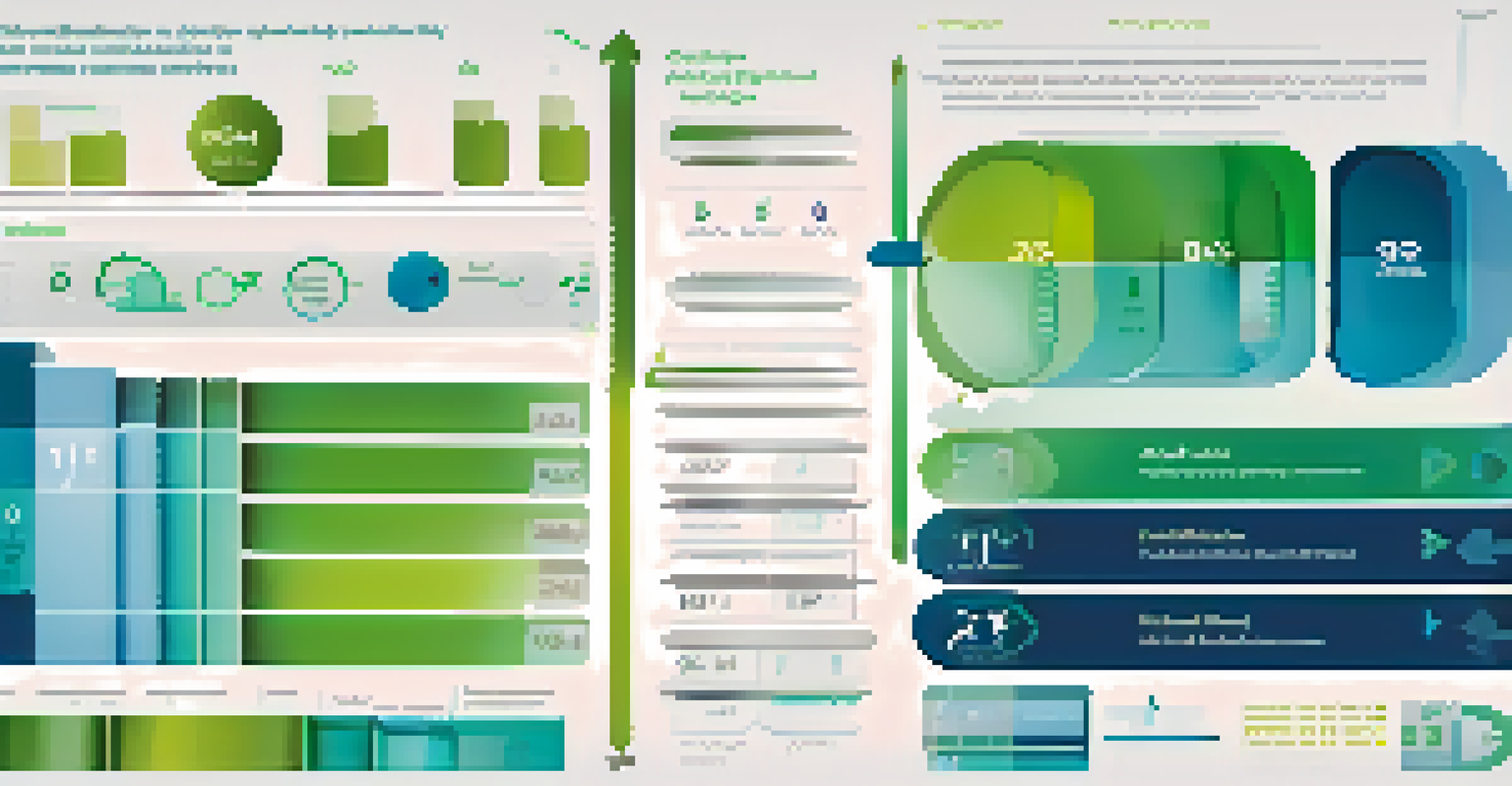Measuring Operational Efficiency Through Key Metrics

Understanding Operational Efficiency and Its Importance
Operational efficiency refers to the ability of an organization to deliver products or services in the most cost-effective manner without compromising quality. In today's fast-paced business world, understanding this concept is crucial for staying competitive. Companies that measure and improve their operational efficiency can streamline processes, reduce waste, and ultimately enhance profitability.
Efficiency is doing better what is already being done.
For instance, a manufacturing firm that optimizes its production line can significantly reduce costs while increasing output. This not only helps in meeting customer demand more effectively but also positions the company favorably against its competitors. Hence, understanding operational efficiency is not just about cutting costs, but about maximizing value across all areas of the business.
In essence, a keen focus on operational efficiency can lead to better resource management, improved customer satisfaction, and stronger overall performance. As organizations strive for excellence, recognizing the importance of this measure becomes imperative.
Key Metrics for Measuring Operational Efficiency
There are several key metrics that businesses can use to assess their operational efficiency. Commonly used metrics include productivity ratios, capacity utilization, and overall equipment effectiveness (OEE). Each of these indicators provides valuable insights into how well resources are being used and where improvements can be made.

For example, productivity ratios help organizations understand how much output is generated per input unit, such as labor hours or material costs. Similarly, capacity utilization measures the extent to which an organization uses its production capacity, indicating whether there's room for growth or if resources are being underutilized. These metrics can paint a clearer picture of operational performance.
Operational Efficiency Matters
Understanding and improving operational efficiency helps organizations reduce costs while maximizing value and competitiveness.
By regularly monitoring these metrics, businesses can identify trends and patterns that may signal inefficiencies. This proactive approach allows companies to address issues before they escalate and make informed decisions that drive operational improvements.
The Role of Data Analytics in Operational Efficiency
Data analytics plays a pivotal role in enhancing operational efficiency by enabling organizations to make data-driven decisions. With the right tools, businesses can analyze vast amounts of data to uncover insights that would otherwise remain hidden. This capability can lead to more informed strategies for optimizing processes and resources.
The greatest waste in the world is the waste of human talent.
For example, a retail company can utilize data analytics to understand customer purchasing patterns, which can inform inventory management. By knowing which products are in high demand, they can adjust their stock levels accordingly, reducing excess inventory and ensuring they meet customer needs efficiently. This is just one way analytics can transform operational practices.
Moreover, analytics can help in predictive maintenance, where data from machinery is analyzed to predict failures before they occur. This not only reduces downtime but also extends the lifespan of equipment, further contributing to operational efficiency.
Benchmarking Against Industry Standards
Benchmarking is the process of comparing your organization's metrics against industry standards or competitors. This practice helps to identify performance gaps and areas for improvement. By understanding where you stand in relation to others, you can set realistic goals and strategies to enhance your operational efficiency.
For instance, if a company discovers that its production costs are significantly higher than the industry average, this could indicate the need for process reevaluation. It might prompt a deeper dive into operational practices to uncover inefficiencies or areas where technology can be utilized. Benchmarking thus serves as a valuable tool for continuous improvement.
Data Analytics Drives Decisions
Utilizing data analytics enables businesses to uncover insights that enhance processes and resource management.
Furthermore, this comparison can motivate teams by providing a clear target to strive for. It fosters a culture of excellence, pushing organizations to innovate and refine their processes to stay competitive in the market.
Employee Engagement and Its Impact on Efficiency
Employee engagement is a crucial factor that impacts operational efficiency. Engaged employees are more likely to be productive, innovative, and committed to their work. When employees feel valued and connected to the organization's goals, they tend to go the extra mile, which can lead to enhanced operational performance.
For example, companies that invest in employee training and development often see a direct correlation between workforce skill enhancement and productivity improvements. Engaged employees are not only more efficient but also contribute positively to the company culture, which can lead to lower turnover rates and reduced training costs.
Creating an environment that fosters engagement can involve open communication, recognition programs, and opportunities for growth. In doing so, organizations can harness the full potential of their workforce, thereby driving operational efficiency.
Continuous Improvement: The Key to Sustaining Efficiency
Continuous improvement is an ongoing effort to enhance products, services, or processes. This philosophy encourages organizations to regularly evaluate their operations and seek ways to improve efficiency. By fostering a culture of continuous improvement, businesses can remain agile and responsive to changing market demands.
An example of this can be seen in the manufacturing sector, where methodologies like Lean and Six Sigma are employed to eliminate waste and improve quality. These frameworks advocate for incremental changes that, over time, lead to significant improvements in operational efficiency.
Continuous Improvement Is Key
Fostering a culture of continuous improvement allows organizations to adapt and innovate, enhancing operational efficiency over time.
Additionally, encouraging feedback from employees and customers can provide valuable insights into potential areas for improvement. By embracing a mindset of continuous improvement, organizations can not only enhance efficiency but also drive innovation and growth.
Technology as a Catalyst for Operational Efficiency
Technology plays a vital role in driving operational efficiency across various industries. From automation to data management systems, leveraging technology can streamline processes and reduce manual errors. This not only saves time but also enhances the overall quality of outputs.
For instance, implementing an Enterprise Resource Planning (ERP) system can integrate various functions within an organization, providing a unified view of operations. This integration allows for better resource allocation, improved communication, and informed decision-making, all of which contribute to operational efficiency.

Moreover, emerging technologies like artificial intelligence (AI) and machine learning can analyze vast datasets to provide actionable insights. By harnessing these technologies, organizations can optimize their operations in ways that were previously unimaginable, ensuring they stay ahead in a competitive landscape.